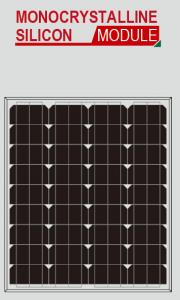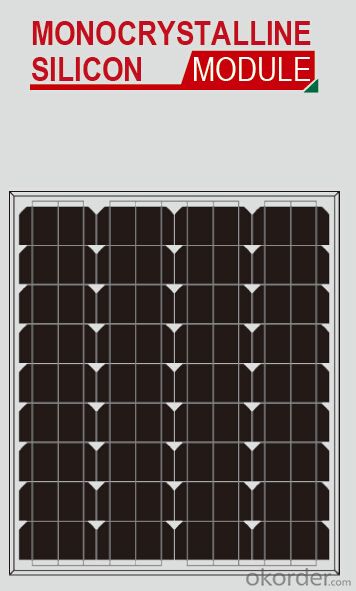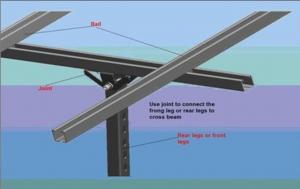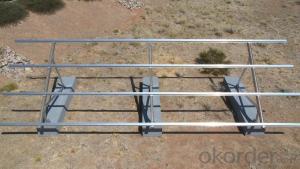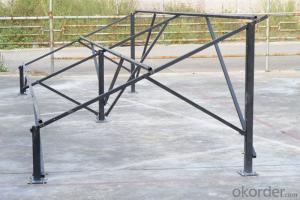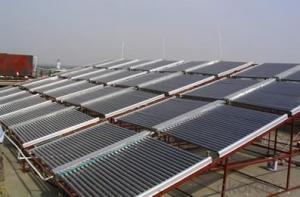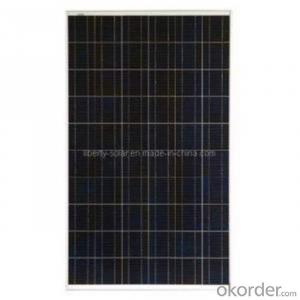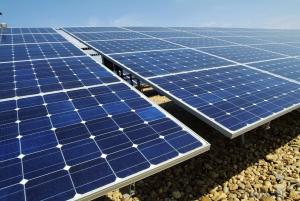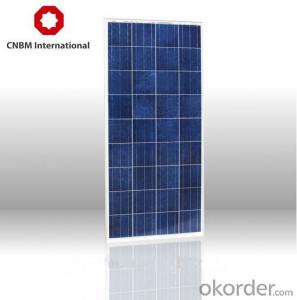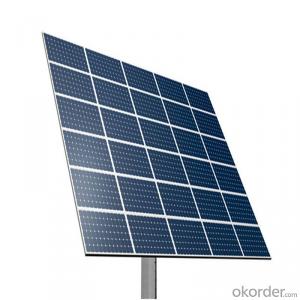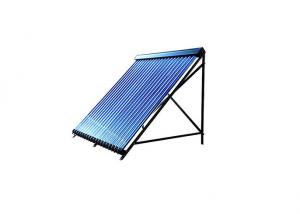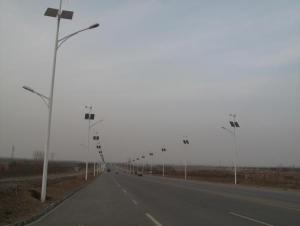80W Pool Solar Water Heater - Low Price, High Quality Solar Panels
- Loading Port:
- Shanghai
- Payment Terms:
- TT or LC
- Min Order Qty:
- 10 pc
- Supply Capability:
- 1000000 pc/month
OKorder Service Pledge
OKorder Financial Service
You Might Also Like
Advantage:
1.Widely using of the most popular and mature type of modulesfor on-grid system.
2.Specifications subject to technology and test conditions,CNBM Solar reserves the right of final interpretation.
3.Leading manufacturing technology in PV industry, strictly controlling the quality of raw materials and the process of producing.
4.100% EL inspection, ensures modules are defects free.
5.Cells binned by current to improve module performance.
6.Anti reflective glass. Not only to increase the light absorption, but also to make the module has the function of self-cleaning in water environment, effectively reducing the power loss caused by dust.
7.Outstanding performance in low-light irradiance environments.
8.Excellent mechanical load resistance: Certified to withstand high wind loads(2400pa) and snow loads(5400pa).
9.High salt and ammonia resistance.
10.Positive power tolerance:0-+5w.
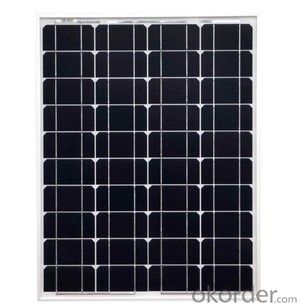
Specification:
Temperature Coefficient
NOCT | 45℃±2℃ |
Temperature Coefficients of Isc (%/℃) | 0.0492 |
Temperature Coefficients of Voc (%/℃) | –0.3374 |
Temperature Coefficients of Pmp (%/℃) | –0.4677 |
Performance Parameters
Rated Maximum Power(Mp) | 70W | 75W | 80W |
Cell Efficiency | 16.4% | 17.6% | 18.8% |
Open Circuit Voltage(Voc) | 22.2V | 22.4V | 22.6V |
Maximum Power Voltage(Vmp) | 17.2V | 17.4V | 17.6V |
Short Circuit Current(Isc) | 4.35A | 4.61A | 4.87A |
Maximum Power Current(Imp) | 4.07A | 4.32A | 4.55A |
Performance Parameters
700V | 700V | 700V | |
Operating Temperature | -45~+80℃ | -45~+80℃ | -45~+80℃ |
Maximum Series Fuse | 10A | 10A | 10A |
Maximum Static Load,Front Side (e.x. Snow,Wind) | 5400Pa | 5400Pa | 5400Pa |
Maximum Static Load, Back Side(e.x. Wind) | 2400Pa | 2400Pa | 2400Pa |
Power | 70W | 75W | 80W |
Class | A | A | A |
Raw materials and Mechanical Parameters
Dimension | 780×670×30mm |
Weight | 5.9kg |
No. of Cells and Connections | 4×9=36/4×18=72 |
Tolerance | 0~+5W |
Cell | mono156×78/156×39 |
Packing | 5pcs/ctn |
Warranty
5 years product warranty
10-years 90% of Min. rated output power,and 25-years 80% of Min. rated output power warranty
Comprehensive Certificates:
CE Certificate
ISO 9001:2008:Quality management systems
IEC61215、IEC61730
TUV and UL
IDCOL for Bangladesh
FAQ:WHAT'S THE ADVANTAGES OF CNBM?
1.CNBM is a state-owned company under jurisdiction of central goverment , one of Fortune 500 .Just because of this ,we can get more support and resources from our government.So ,it is realiable .
2.CNBM's solar products are high-qualified with TUV,UL,VDE,CE,ISO certificates. Our products ranges top in China.
3.Just as I mentioned in attahment ,we signed 500MW project with Urkan under the witness of our chairman Xi Jinping ,CNBM has ability to meet your large quantity needs,Our annual capacity is 1GW.
4.We can offer you a competitive price .Because you are our potential and valued customer .
5.We ,CNBM ,has our own factory :CNBM JETION SOLAR .We can also customize according to customers' need . You can google our factory .
FAQ:Why install a Solar PV system?
There are many reasons to install a Solar PV system now:
As a low risk investment the returns of between 8-10% net are hard to beat especially during this financial downturn where bank interest rates are below inflation (i.e. money in a savings account even with interest added is actually reducing in value).
Its good for the environment. Installing a small domestic system of around 1.5 kW would provide around 1125 kWh of electricity every year, this would save around half a tonne of CO2 annually.
Electricity can be supplied at the point of use. Reducing strain on our national grid network.
The system will run silently and so will cause minimal disruption.
There is very little maintenance required for a PV system.
After the initial installation costs, there are no further fuel costs.
PV systems are modular, and can be added to at any time.
FAQ:How long will a Solar PV system last?
The MCS accreditation scheme means that all panels installed under the scheme by approved agents will continue to generate for at least 25 years. Over this time their output will diminish slightly but they should still perform at 85% at the 25 year mark according to the scheme rules. Manufacturers have invested heavily to ensure their products meet and in most cases exceed these target
- Q: Do solar lights have adjustable sensitivity settings?
- Yes, some solar lights do have adjustable sensitivity settings. These settings allow users to adjust the sensitivity of the light's motion sensor, determining the distance and angle at which the sensor will detect motion and activate the light.
- Q: Are there any safety features built into solar controllers?
- Yes, there are several safety features built into solar controllers. One of the most important safety features is overcharge protection. Solar controllers are designed to prevent the batteries from being overcharged, which can lead to damage or even explosions. The controller monitors the battery voltage and adjusts the charging current to ensure that the battery is charged optimally without overcharging. Another safety feature is reverse polarity protection. This feature ensures that the solar controller will not be damaged if the battery or solar panel connections are accidentally reversed. It helps prevent any potential short-circuits or damage to the controller. Many solar controllers also have over-discharge protection. This feature prevents the battery from being discharged too much, which can reduce its lifespan or even cause irreversible damage. The controller monitors the battery voltage and automatically disconnects the load when the battery voltage drops below a certain threshold. Additionally, some solar controllers have temperature compensation. This feature adjusts the charging voltage based on the temperature of the battery. It ensures that the battery is charged properly regardless of the ambient temperature, which helps to extend the battery's life. Overall, solar controllers are equipped with various safety features to protect both the batteries and the controller itself. These features help to ensure the safe and efficient operation of solar power systems.
- Q: Can solar energy systems be used in areas prone to hurricanes or tornadoes?
- Yes, solar energy systems can be used in areas prone to hurricanes or tornadoes. While extreme weather events like hurricanes and tornadoes can potentially damage solar panels, advancements in technology and installation practices have made solar systems more resilient and able to withstand such conditions. For instance, solar panels are designed and tested to withstand high wind speeds and impact from debris. Additionally, proper installation techniques, such as using reinforced mounting systems and ensuring secure attachment to roofs or the ground, can further enhance their resistance. Therefore, while precautions need to be taken, solar energy systems can still be a viable and sustainable option in areas prone to hurricanes or tornadoes.
- Q: What is the optimal angle for solar vacuum tube installation?
- The optimal angle for solar vacuum tube installation varies depending on the geographical location. However, a commonly recommended angle is between 30 to 45 degrees, as it allows for maximum solar energy absorption throughout the year.
- Q: Can a solar pump be used for geothermal heating and cooling?
- No, a solar pump cannot be used for geothermal heating and cooling. Geothermal heating and cooling systems rely on the natural heat from the earth's core to provide heating and cooling for buildings. These systems typically use a series of underground pipes to circulate a heat transfer fluid, such as water or antifreeze, which absorbs heat from the ground in winter and releases heat into the ground in summer. On the other hand, solar pumps are designed to harness energy from the sun to power various applications, such as pumping water or circulating fluids. They are not specifically designed to tap into or utilize geothermal energy. While solar energy can be used to power other components of a geothermal system, such as pumps or fans, it cannot replace the geothermal heat exchange process that is fundamental to these systems.
- Q: Do solar lights have a built-in light sensor for automatic on/off?
- Yes, most solar lights have a built-in light sensor for automatic on/off functionality. The light sensor, often referred to as a photovoltaic cell, is responsible for detecting the ambient light levels. When the sensor detects that the surrounding light has reached a certain threshold, typically at dusk or when it gets dark, it triggers the solar light to turn on automatically. Similarly, when the light sensor detects that the surrounding light has increased, usually at dawn or when it gets brighter, it signals the solar light to turn off. This automatic on/off feature allows solar lights to operate efficiently and saves energy by only illuminating when needed.
- Q: Can a solar pump be used for industrial processes requiring water circulation?
- Yes, a solar pump can be used for industrial processes requiring water circulation. Solar pumps are capable of providing reliable and efficient water circulation for various industrial applications such as cooling systems, irrigation, and wastewater treatment. They can be customized and sized to meet the specific requirements of different industrial processes, providing a sustainable and cost-effective solution.
- Q: What is the impact of shading on the performance of solar panels?
- The performance of solar panels is greatly affected by shading, as it reduces the amount of sunlight reaching the cells and decreases energy production. This is because solar panels convert sunlight into electricity through the photovoltaic effect. When a solar panel is partially shaded, it creates a phenomenon called the "hotspot effect." This occurs when shaded cells within the panel become a pathway with high resistance for electricity flow, resulting in localized temperature increase. The increased heat can compromise the panel's performance and reduce its efficiency. Furthermore, shading also impacts the panel's voltage and current output. Solar panels are typically connected in series to increase voltage output. However, even a single shaded panel can significantly hamper the performance of the entire series-connected string. The shaded panel acts as a bottleneck, restricting current flow throughout the string. To minimize the effects of shading, various solutions can be employed. One commonly used method is the incorporation of bypass diodes, which allow current to circumvent the shaded cells and prevent the hotspot effect. By utilizing bypass diodes, energy loss due to shading can be minimized, ensuring that the rest of the solar panel operates efficiently. Additionally, proper design and placement of solar panels can help mitigate shading effects. Installing panels in areas with minimal obstructions or shadows, such as rooftops or open fields, maximizes their exposure to sunlight. Regular maintenance, including trimming nearby trees or vegetation that may cast shadows, is also crucial for optimal performance. In conclusion, shading significantly impacts the performance of solar panels, resulting in reduced energy production and efficiency. Understanding and addressing shading issues through the use of bypass diodes and careful installation can maximize the effectiveness and output of solar panel systems.
- Q: Can solar panels be installed on a balcony or terrace?
- Yes, solar panels can be installed on a balcony or terrace. However, it is important to consider factors such as the available space, orientation, shading, and structural integrity of the balcony or terrace before installation. Additionally, local regulations and building codes may also need to be taken into account.
- Q: Can a solar pump be used in areas with limited access to water collection?
- Yes, a solar pump can be used in areas with limited access to water collection. Solar pumps are not dependent on traditional electricity sources and can operate using solar energy. This makes them ideal for remote areas where water collection may be challenging. The solar pump can extract and deliver water from various sources such as wells, rivers, lakes, or even underground aquifers, providing a sustainable solution for communities with limited access to water collection infrastructure.
Send your message to us
80W Pool Solar Water Heater - Low Price, High Quality Solar Panels
- Loading Port:
- Shanghai
- Payment Terms:
- TT or LC
- Min Order Qty:
- 10 pc
- Supply Capability:
- 1000000 pc/month
OKorder Service Pledge
OKorder Financial Service
Similar products
Hot products
Hot Searches
